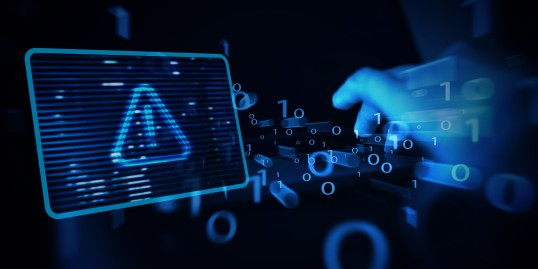- Artificial Intelligence (AI)
- Occupational exposure limit values
- Climate Change and Occupational Safety
- List of CMR substances
- Electromagnetic fields
- Ergonomics
- Industrial Security
- Collaborative robots
- Noise
- Nanoparticles at the workplace
- Optical Radiation
- REACH
- Reference materials
- Proficiency testing
- Vibration
- Virtual reality
- Work 4.0
Cybercrime

Source: TippaPatt -- stock.adobe.com
The term "cybercrime" may be misleading. More appropriate terms are "attacks on control systems", "criminal offences committed over the Internet" or "criminal offences committed with use of a computer". These offences have the purpose of stealing information, identity theft, sabotage, espionage, blackmail, theft of cryptocurrencies, destruction of physical systems, disinformation or acts of terrorism.
This includes, for example:
- Attacks on remote controls, for example over a narrowband radio channel, WLAN or optical connection
- Attacks on control systems or computer systems, e.g. by means of malware (such as ransomware), DDoS attacks (malicious overloading of the IT infrastructure), or spam and phishing (falsified and malicious emails)
- Acts that violate personality rights, copyright or trademark law, e.g. by data leaks and doxing (collection of personal data)
- Theft of digital assets (non-fungible tokens or tokens in a cryptocurrency)
- Development of programs that could be used to spy on computer systems
- Installation of backdoors that allow unauthorized access to systems, e.g. hardware trojans
- Denial, concealment or maintenance of security vulnerabilities
- Spreading of lies or untruths
- Unauthorized creation of movement profiles